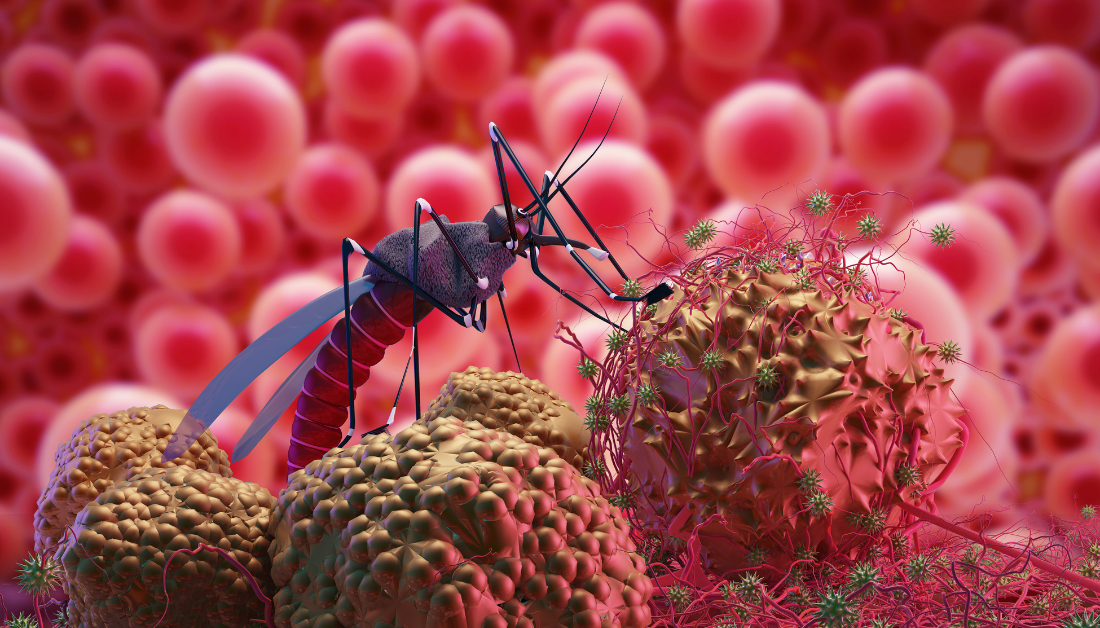

To protect individuals from the potentially lethal mosquito-borne Zika virus, a needle-free vaccine patch is being developed.
A prototype using a high-density microarray patch (HD-MAP) created by The University of Queensland and commercialized by Vaxxas delivered a vaccine developed by The University of Adelaide and induced an efficient immune response to Zika virus in mice.
Dr Danushka Wijesundara, a UQ alum and Vaxxas researcher, said the Zika virus posed a risk to individuals in the Pacific, Southeast Asia, India, Africa, and South and Central America.
We can change the way we combat Zika virus with the HD-MAP patch because it is an effective, pain-free, simple to apply, and easy to store vaccination method.
HD-MAP delivers the vaccine to immune cells beneath the skin’s surface with thousands of tiny microprojections.
In our pre-clinical trial, the vaccine provided rapid protection against live Zika virus, targeting a specific protein called NS1 which is crucial to the virus’s survival.
The vaccine patch evoked T-cell responses that were about 270 per cent higher than from a needle or syringe vaccine delivery.”
Dr Danushka Wijesundara, UQ alum and Vaxxas researcher
In most cases, the Zika virus causes a mild sickness, but infection during pregnancy can result in miscarriage, stillbirth, or newborns with congenital deformities.
The World Health Organization declared a Public Health Emergency of International Concern in February 2016 as the Zika virus spread across 40 Latin American countries, resulting in more than 1.5 million confirmed or suspected cases in a 6-month span.
According to Associate Professor Branka Grubor-Bauk of the University of Adelaide, limited worldwide surveillance suggests the Zika virus is active in at least 89 nations and territories, but there is presently no licensed vaccine.
“This vaccine is unique because it targets a protein inside, rather than outside of the virus meaning it won’t enhance the symptoms of closely related viruses such as dengue fever, in people who’ve been vaccinated,” Dr Grubor-Bauk said.
Dr David Muller from UQ’s School of Chemistry and Molecular Biosciences said the microarray patch and the vaccine could have benefits beyond the ability to protect from Zika virus.
“Because the protein we’re targeting plays a central role in replication in a virus family known as flaviviruses, there’s the potential to apply our approach to target other flaviviruses such as dengue or Japanese encephalitis,” Dr Muller said.
“It could also deliver a vaccine mixture to target the whole family of viruses, providing greater protection.
“A major benefit of the HD-MAP delivery platform is vaccine stability at elevated temperatures – we found the patch retained vaccine potency when stored at 40 degrees Celsius for up to four weeks.
“This increases the reach of vaccines in low- and middle-income countries where refrigeration is challenging.”
Wijesundara, D. K., et al. (2023). Superior efficacy of a skin-applied microprojection device for delivering a novel Zika DNA vaccine. Molecular Therapy – Nucleic Acids. doi.org/10.1016/j.omtn.2023.102056
more recommended stories
 Phage Therapy Study Reveals RNA-Based Infection Control
Phage Therapy Study Reveals RNA-Based Infection ControlKey Takeaways (Quick Summary) Researchers uncovered.
 Safer Allogeneic Stem Cell Transplants with Treg Therapy
Safer Allogeneic Stem Cell Transplants with Treg TherapyA new preclinical study from the.
 AI in Emergency Medicine and Clinician Decision Accuracy
AI in Emergency Medicine and Clinician Decision AccuracyEmergency teams rely on rapid, accurate.
 Innovative AI Boosts Epilepsy Seizure Prediction by 44%
Innovative AI Boosts Epilepsy Seizure Prediction by 44%Transforming Seizure Prediction in Epilepsy Seizure.
 Hypnosis Boosts NIV Tolerance in Respiratory Failure
Hypnosis Boosts NIV Tolerance in Respiratory FailureA New Approach: Hypnosis Improves NIV.
 Bee-Sting Microneedle Patch for Painless Drug Delivery
Bee-Sting Microneedle Patch for Painless Drug DeliveryMicroneedle Patch: A Pain-Free Alternative for.
 AI Reshapes Anticoagulation in Atrial Fibrillation Care
AI Reshapes Anticoagulation in Atrial Fibrillation CareUnderstanding the Challenge of Atrial Fibrillation.
 Hemoglobin as Brain Antioxidant in Neurodegenerative Disease
Hemoglobin as Brain Antioxidant in Neurodegenerative DiseaseUncovering the Brain’s Own Defense Against.
 Global Data Resource for Progressive MS Research (Multiple Sclerosis)
Global Data Resource for Progressive MS Research (Multiple Sclerosis)The International Progressive MS Alliance has.
 AI Diabetes Risk Detection: Early T2D Prediction
AI Diabetes Risk Detection: Early T2D PredictionA new frontier in early diabetes.

Leave a Comment